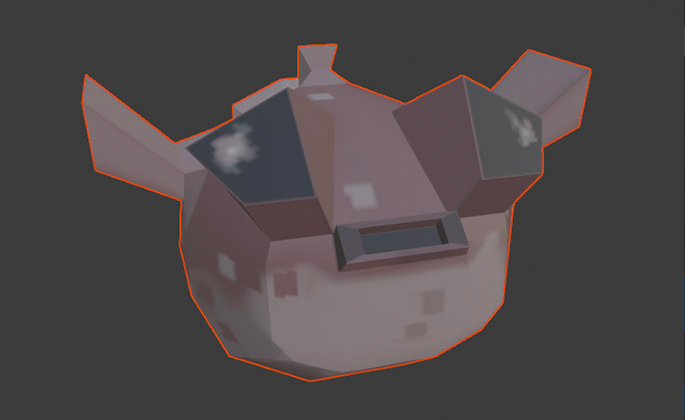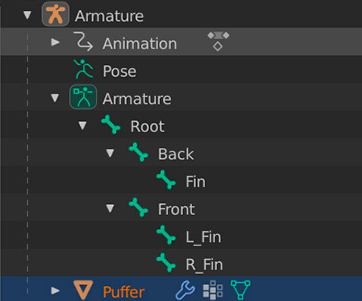Roblox, Blender veya Maya gibi üçüncü taraf yazılımlardan oluşturulan çok çeşitli mesh yapılandırmalarını destekler.
Studio uyumluluğunu sağlamak için ihraç edilmeden önce modelinizin aşağıdaki modelleme özelliklerine ve yönergelerine uyduğundan emin olun.Karakterler ve aksesuarlar gibi belirli türde varlıkların ek özellikleri vardır:
- Sert bir aksesuar modeli oluşturuyorsanız, modelinizin aksesuar özelliklerine uyduğundan emin olun.
- Bir giyim aksesuar modeli oluşturuyorsanız, modelinizin giyim özelliklerine uyduğundan emin olun.
- Bir avatar karakter modeli oluşturuyorsanız, modelinizin karakter özelliklerine uyduğundan emin olun.
İhracata hazır olduğunuzda, Blender ve Maya için örümcek ihraç ayarlarını ihracat ayarları görün.
Coğrafya
Genel geometri için aşağıdaki özelliklere bakın:
- Bütçeler - Bireysel dokular 10,000 üçgeni aşamaz.Avatar öğelerinin karakterler ve aksesuarlar için kendi bütçe gereksinimleri vardır.
- Su geçirmez - Tüm geometrinin açık delikler veya arka yüzler olmadan su geçirmez olması gerekir
- N-gons yok - Mesh'ler mümkün olduğunda dörtlü olmalıdır.
- Hacim - Örüntüler 0 kalınlık olmamalı ve biraz hacime sahip olmalıdır.
Kırıştırma ve ciltleme
Roblox, üçüncü taraf meshlere bir iç donanımla veya modelinizde ek artikülasyon noktaları olarak kullanılabilecek bir iskelet yapısıyla destek verir.Bir R15 karakter takımı için özel standartlar için Karakter takımları görün.


Genel sabitleme ve ciltlama için aşağıdaki gereksinimleri görün:
- Dönüşümler - Tüm kemikler (Blender) veya eklemler (Maya) dondurulmalı ve ölçek değerleri , , ve dönüş değerleri olarak ayarlanmalıdır.
- Simetri - Mümkün olduğunda, bir ekipmana etki uygularken simetriyi koruyun
- Kök eklemi - Kök kemiği veya eklem daima 0 , 0 , 0 olarak ayarlanmalıdır.
- Maksimum etkileri - Bir vertex, 4'ten fazla kemik veya eklem tarafından etkilenemez.
- Kök etkisi yok - Kök kemiğe veya eklemde etki uygulamayın
Dokular
Roblox temel renk dokularını ve modern PBR dokularını destekler.Tek tekstür görüntüleri oluştururken teknik gereksinimler ve en iyi uygulamalar, Doku özellikleri bakın.
Animasyonlar
Bir animasyon herhangi bir .fbx çatı çıkışına dahil edilebilir.Bir karakter animasyonunu ihracat için bir modelleme yazılımından hazırlamakla ilgili bilgi için, Maya'dan animasyonları ihracat bakın.
animasyonvarlıklar için aşağıdaki gereksinimleri görün:
- Tek iz animasyonu - Sadece bir tek animasyon izi bir mesh veya model ile ihraç edilebilirBirden fazla animasyonu ihraç etmek istiyorsanız, ithal etmek istediğiniz her animasyon için ayrı bir ihracat oluşturmanız gerekir.
İç ve dış kafesler
İç ve Dış kafesler, bir WrapLayer veya WrapTarget durumkullanarak bir meshenin iç ve dış yüzeylerini tanımlamak için Roblox tarafından kullanılmayan görünmez meshlere sahiptir.Bu kafesler çoğunlukla karakterler ve aksesuarlarla birlikte kullanılır, ancak herhangi bir çerçeve nesnesi için kafes örüntülerini kullanabilirsiniz.
Genel kullanım için, modelinize iç ve dış kafes örüntüleri eklemek için aşağıdaki gereksinimlere bakın:
İsimlendirme kuralları - İç ve dış kafes, _InnerCage ve _OuterCage eklenerek birincil örüntü nesnesinin adına verilmelidir.

Dış kafes - Oynanabilir bir karakter gibi, deform olması beklenmeyen ancak üzerinde genişleyecek meshelerin hedefi olan modeller, sadece bir Dış Kafese ihtiyaç duyar.
Üçgenler ve UV haritası - Üçgenleri silmeyin veya Studio'ya ithal edilirken veya bir karaktere donatılırken hatalara neden olabilecek UV'leri değiştirmeyin.
Simetri ve tutarlılık - Her yüze (vertexler arasındaki boşluk) tutarlı bir şekilde boyutlandırın ve mümkün olduğunca simetriyi koruyun.Mümkün olduğunda modelleme yazılımınızda simetri araçlarını kullanın.